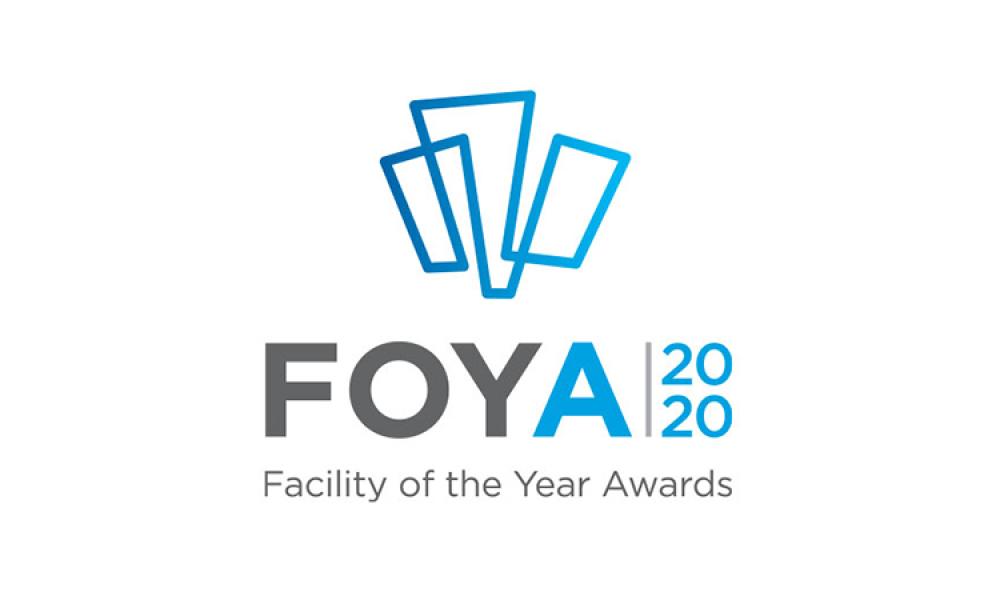ISPE Global Regulatory Town Hall: Answers to Key Questions

The 2019 ISPE Annual Meeting & Expo plenary featured a global regulatory town hall addressing a wide range of information about trends in regulations and other developments in the pharmaceutical industry. The town hall format offered attendees the chance to ask a panel of regulators about issues such as harmonization initiatives and information sharing among industry members and regulators. As Sara Pope Miksinski, PhD, Senior Director of Global Regulatory Affairs at AstraZeneca and session leader noted, “Big-picture thinking is the idea of this town hall.”
Overview Presentations
The plenary began with short presentations by four of the panelists on activities and forward-looking focus for their respective regulatory agencies and organizations.
MHRA
David Churchward, Expert GMP Inspector at the MHRA, noted that as one of its current key areas of focus, the agency is involved with various international harmonization initiatives including ICH, ICRA, and PIC/S.
Digital health and Pharma 4.0™ are another area of focus; MHRA recently set up an expert tech group tasked with horizon scanning and ensuring they are ready for the future. A team is also looking at artificial intelligence (AI), especially in medicine and software as medical devices, blockchain, and rapid data capture systems. He noted that use of technology to perform regulatory functions is on the rise, with a lot of opportunities for big data in regulatory oversight throughout the drug life cycle in the years ahead.
Personalized medicine is increasing, and MHRA has an innovation office to engage with this area and clinical trials. In the future, MHRA will work to address regulatory and supply chain challenges such as manufacturing at point of care, making medicines in centralized premises, and making medicines fit for administration or true manufacture at point of care if a product may be less stable and manufacturable for stock. Regulations to accommodate these new supply chains are an area of focus.
WHO
Joey Gouws, PhD, Lead, Inspection Services, Regulation of Medicines and Other Health Technologies, World Health Organization (WHO), noted that health and medicine are a key priority for WHO’s Director-General. Gouws is in the essential medicines and health products program of WHO, which has two strategic roles: facilitator, focusing on innovation and increased access to medicine and health products, and guardian, focusing on regulatory capacity building and practices in WHO member states. Her department looks at innovation, access, use of healthcare, and the regulation of medicines and other health technology. The focus is on outcomes, she noted, including harmonizing norms and standards; standards and practices across the globe; and international pharmacopeia, among other areas. Her unit “wants to be sure everyone has access to quality essential meds, vaccines, and other products.”
FDA
Lawrence Yu, PhD, Deputy Director, Office of Pharmaceutical Quality, CDER/FDA, shared that the FDA’s strategic priorities for the next five years will be collaboration, innovation, engagement, and communication. The agency has two major initiatives for premarketing assessment. The first, launched in 2015 for drug products and biopharma, seeks enhancement and collaboration with team members and assessment/inspection. The second, launched in 2018, is the Knowledge-aided Assessment and Structured Application (KASA) initiative to provide the FDA with more information “at our fingertips.” A postmarketing initiative in quality metrics is underway, with the first report focused on state of quality of facilities in the current space. Inspections with specific timeline and a 90-day about the state of the facility have been added. The FDA is also working in investigation digitalization and continues to make significant process in continuous manufacturing.
ANVISA
Raphael Sanches Pereira, Health Regulation and Surveillance Specialist with ANVISA, Brazil’s regulatory agency, gave an overview of ANVISA’s goals. The priority is to make of drugs available in Brazil as quickly as they come to the US and Europe. An important strategy in realizing this goal involves harmonization as well as recognition of and reliance on the agency’s work. For reliance, there is a need for equivalency of rules (harmonization) or mapping of differences; trust and relationships (at the reviewer’s level); and equivalency of documents submitted (or mapping of differences). Challenges for harmonization include fitting guidelines into the Brazilian legal framework, which is different from the framework in the US or Europe; interpretation; discussion with stakeholders; workforce limitations; knowledge; and sponsors’ submission equivalency.
Panel Q&A
Moderator Roger Nosal, PhD, Vice President and Head of Global Chemistry, Manufacturing & Controls (CMC) at Pfizer Inc., led the question-and-answer panel discussion. Churchward, Gouws, Pereira, and Yu were joined by Renata de Lima Soares, Regulatory Specialist, ANVISA; Commander Emily Thakur, RPh, Team Leader, Drug Shortages Staff, FDA/CDER; and Rapti Madurawe, PhD, Director, Division of Process Assessment I, Office of Pharmaceutical Quali-ty, FDA/CDER.
Update on MRA: Will the EMA and FDA share progress/metrics? Also, with MHRA leaving, what impact will this have on the EMA annual inspection plans?
Churchward responded to the first two points only, noting that the mutual recognition agreement (MRA) is fully functional between the EU and US. The impact of the MHRA leaving the EU is unclear. In practice, there has been active use of the MRA with Europe-focused facts in the agreement, which came into force in October 2017. As a result, there has been a 75% reduction in EU inspections performed in the US. Nationally, MHRA has had 28 inspection requests from the FDA, and MHRA provided responses to 75 information requests, showing that there has been a good start to the MRA.
For Yu and others: What is the knowledge structure investment? Are there any potential opportunities for industry to be in discussions with the FDA around what they are doing?
Yu noted that the KASA initiative mentioned in his presentation is a way to make knowledge available, and the FDA is always glad to talk with industry. There has been significant progress, especially in generics and, soon, new drugs. He noted that the FDA is seeking more digitalization and also would like to be able to read and store data digitally.
Nosal added that a discussion point during some meetings in which KASA has been introduced is, how does the FDA want to use the data and why is it valuable in a structured format?
Yu responded that assessors look at the data, specifications, etc., and sometimes have to retype or cut and paste the information. Removing these extra actions would be a good step, and it would be helpful to have digital information for life-cycle management so changes can be automatically saved and dated where needed. Digitalization of submissions is the next level. Nosal observed that many companies in industry are also struggling with data management.
Would ANVISA be willing to expand upon the current status of ICH integration now that they are members of ICH? What do you see as opportunities and challenges for harmonization?
Pereira responded that ANVISA wants to expand its status in ICH, and that he hopes to be on the management committee. There are some efforts to implement the guidelines, although there are difficulties, mostly about interpreting old guidelines: newer guidelines are easier to implement because ANVISA participates in their elaboration. He noted that ANVISA is applying for PIC/S membership, and Lima Soares added that Brazil’s specifications may limit implementation of guidelines. She also said that other issues in Brazil include the need to adjust to change and necessary training to adopt new guidelines.
ICH membership will help with applications for Brazil, Pereira said. “We need to participate in early stages of development and need flexibility be-cause early-stage drugs are not the same discussion as already developed drugs. It’s a huge advantage for our patients.” Expanded capacity will be needed for this growth.
In the CAR-T presentations [during the conference], it was stated that production batches were “released” with OOS [out of specification], and deviations. It was said FDA/EMA is okay with this to get drugs to patients quickly. True?
Churchward said, “Be clear: Are we ok with products going to patients with OOS and deviations because the system is poorly controlled? Absolutely no.” However, the unique properties of advanced therapies, especially life-saving therapies using the patient’s own blood or tissue, may not meet existing specifications. “Starting material from the patient is highly variable, so you end up with a variable product—but not because of a variable process. We want to meet needs of patients. Often these products have very short shelf life.” He noted that guidance provides for proceeding in agreement with the treating physician and letting the regulatory authority know. The patient needs to be treated; depending on the deviation from the specifications, the patient may be excluded from the trial. There is a need for balance here, he noted.
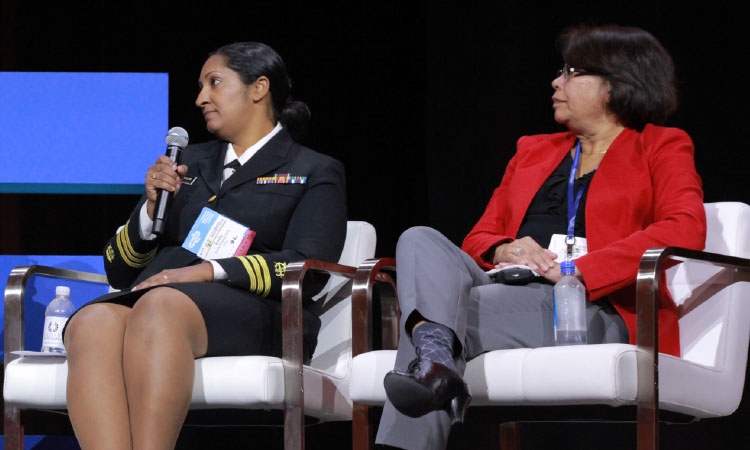
Thakur agreed that this can be very difficult. “We must balance the risk of the patient not having the product to the risk of the product itself.” Working with the agency is indicated in these instances. Gouws said this is the WHO approach as well: “Look at the risk to the patient. Will we have no product on the market? Look at additional testing, quality control, and additional requirements for that batch. We’d rather have some product than none.”
As we look at repurposing older facilities and bringing in new modalities like viral vectors, what are the expectations of segregation between viral vector technology and a mature product?
Madurawe replied that this is hard to answer. “We are not in the biotech space; we are with small molecules, not viral. With repurposing an old facility, you need to meet current cGMP requirements. Most older facilities are being morphed into smaller, more agile, more advanced facilities.” Pereira agreed. “My experience is more in small molecules, but we have had some discussion recently regarding where this kind of process will be analyzed: In the same office as biologicals? A different office? Some of these products have so many specificities. We need to train and have a better understanding of the product.”
What is the most important aspect of ICH Q12? What will be most difficult aspect to introduce within your agencies?
ICH Q12 is very forward thinking, and it will be very useful for the FDA to manage the postmarketing workload that is “ballooning,” Madurawe said. “We do see challenges: Getting an application to approval status in the review cycle is difficult enough. Now, we are looking at the postmarketing/change management perspective—this is another layer. Also, we struggle with huge reliance on quality management systems. Many regulators, not just the FDA I am sure, would accept a lot of change management ideas if they had full confidence in the quality management system (QMS). It is hard to tell how good the quality management system is—there is no metric right now. Also, QMS is subject to change through the product life cycle.”
A key part of effective implementation of Q12 is ensuring a QMS is in place through the supply chain. David Churchward, MHRA
Nosal asked Churchward about QMS and how more confidence can be had in it. Churchward replied that a key part of effective implementation of Q12 is ensuring a QMS is in place through the supply chain. This is a challenge because if one part of the supply chain is not in an ICH region, how can it be certain that the QMS is in place? Many territories do not have, or have different, marketing authorizations, which is adds additional complexity. Communication of marketing authorization and communication between regulators are needed. “If a product is registered in the US, we need to know the change management protocols in use.”
Pereira said he hoped Q12 will help with current challenges concerning postapproval change workloads. “We understand Q12 is very important in solving this. We don’t have as many postapproval changes as Europe or the FDA, but we have many more than Australia, for instance.”
This is also a huge challenge for WHO, Gouws said. “When we look at the way WHO operates, we prequalify or register products for purposes of UN agencies to buy/deliver products to low- or middle-income countries. If you look at the life cycle of products, we receive applications for change management and variations and evaluate and approve those; then, when you go into the distribution chain, the product could be delivered to a country with no regulatory system. How can we make sure the prequalified product is the one actually reaching that country? A UN agency may have a quality system to address this. Going forward, it will be a challenge.”
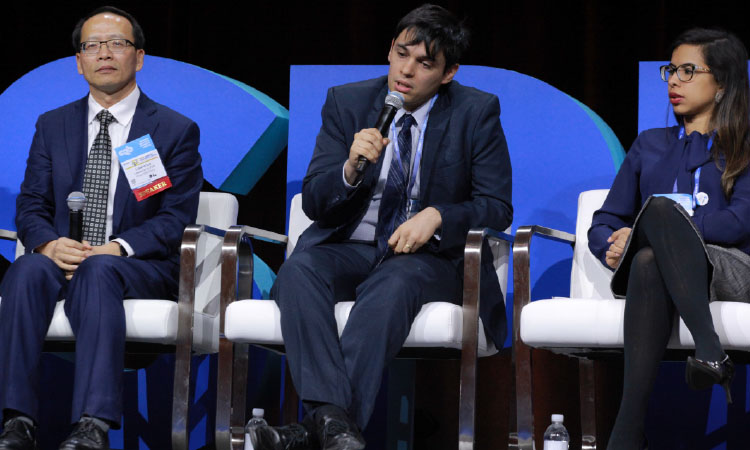
Renata de Lima Soared, ANVISA.
Yu noted that a common theme in FDA meetings is the challenge of postmarketing management. “I truly believe Q12 is a significant advancement compared to the current system. Regulators do need to embrace it because it is an advancement.”
With the industry moving forward with new innovative technologies and biotechnology, please reflect on quality systems and accelerated filings in these new areas.
Madurawe said that with implementation of advanced technologies, “we see the facility aspect and actual technology get closer and closer together. It is no longer sufficient to consider submission reviews from facility aspects; we must link them together holistically. Old quality system elements may be there, but specifics for that particular technology may not be, so we need to update, train the people, have the right documentation, etc.”
Although elements of the system may be the same, the way the system is used needs to be different, Churchward said. Control strategies, not just control measures, should be discussed. Careful consideration of process and how to design and monitor with feedback through the quality system will ensure the state of control is maintained.
Pereira added that quality review is able to evolve a lot. The move is to holistic review: a pharma quality system with documents and a system as a whole. “Have this in mind. More and more we will get deeper into quality systems; new technologies will allow you to have better evaluation. ICH Q8, Q9, and Q10 have a different approach to quality system; have that in mind, too.”
A few examples of some reliance activities: How far can it go? What are some challenges? Commonality of information in postapproval change is one. What else?


“Regulators around globe realize you cannot do everything on your own anymore—you must tap into knowledge that is out there, must tap into other regulatory authorities,” Gouws said. “You must trust them and first must understand how they do what they are doing in order to trust. Common standards and guideline documents become more and more important. If we look at information available on specific aspects under consideration, a regulatory authority will have to look at it and make an informed decision if it addresses the issues important for WHO. Then decide to accept or not accept.”
Churchward said, “We need to go big on ambition but delivery [may take time]. Work toward harmonization. Have the political will to do it. Harmonizing standards and approaches will take give-and-take among all regulators. It’s a bigger conversation, but that is what we need to be aiming for.”
2019 ISPE Annual Meeting & Expo Highlights: New Leadership and Awards
ISPE’s 2019–2020 Chair, Frances Zipp, took the helm of the organization during the 2019 ISPE Annual Meeting & Expo Membership and Awards Breakfast on Tuesday, 29 October 2019, from outgoing chair James E. Breen, Jr., PE, 2018–2019 International Board Chair and Vice President, Lead Biologics Expansion at Janssen Pharmaceuticals. Breen continues to serve ISPE’s International Board as immediate Past Chair.
Breen introduced the 2020 Board Officers: Fran Zipp, Chair; Tom Hartman, Vice Chair; Joanne Barrick, Treasurer; Jörg Zimmermann, Secretary; and Jim Breen, Past Chair. Directors are Vivianne Arencibia, Gunter Baumgartner, Scott Billman, Chris Chen, Ylva Ek, Lou Kennedy, Stephen Mahoney, Christine M.V. Moore, Alice Redmond, Caroline Rocks, and LeAnna Marcum (Young Professionals Representative).
Breen and Zipp presented awards during the session:
-
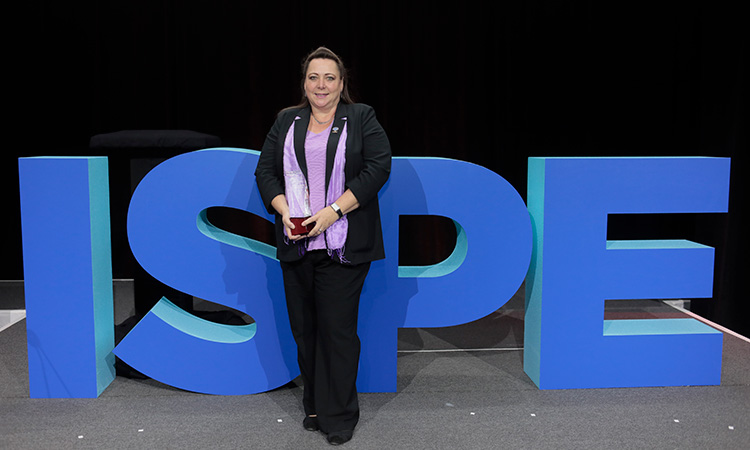
Max Seales Yonker Member of the Year Award: Charlie Wakeham -
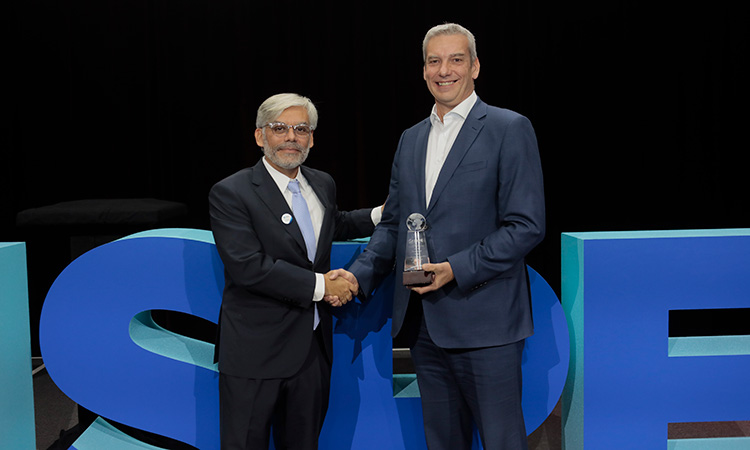
Richard B. Purdy Distinguished Achievement Award: Christopher Reid -
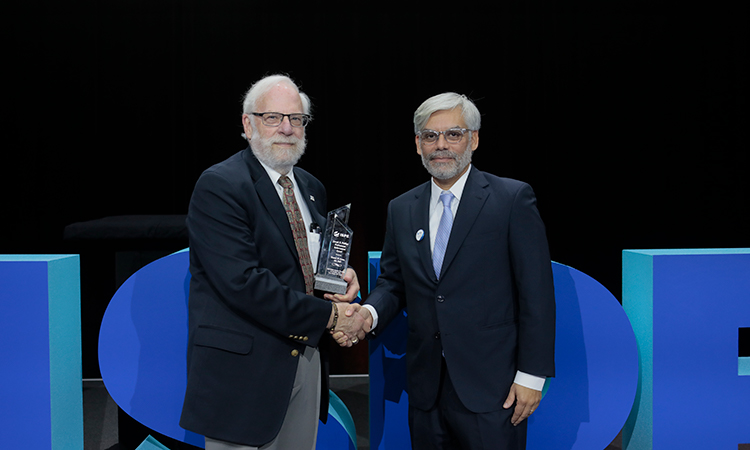
Joseph X. Phillips Professional Achievement Award: Dennis Gross -
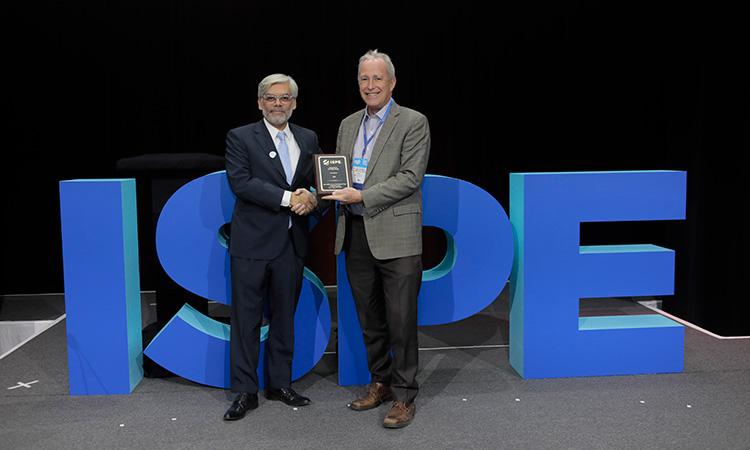
Company of the Year Award: CRB -

Facility of the Year Award (FOYA) Overall Winner Award: Kantonsapotheke Zurich -
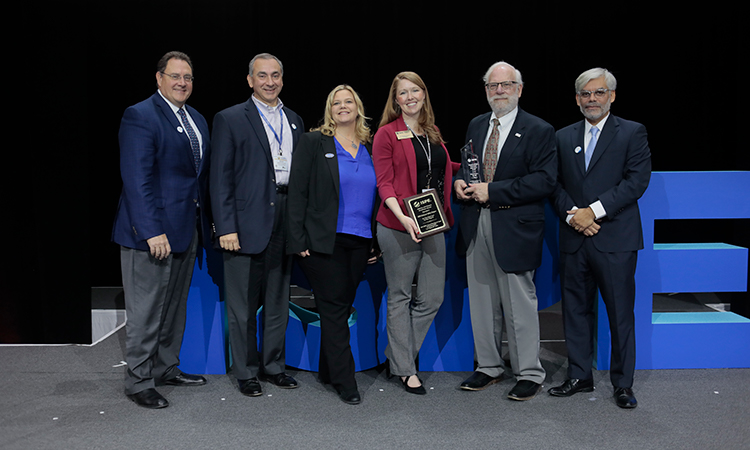
Affiliate and Chapter Excellence Award: Delaware Valley Chapter -

Committee of the Year Award: 2019 ISPE European Annual Conference Programme Committee -

2018 Roger F. Sherwood Article of the Year Award—Pharmaceutical Engineering® - “Continuous Manufacturing in Biotech Processes: Challenges for Implementation” by Robert Dream, PE, CPIP; Christoph Herwig, PhD; and Emilie Pelletier -
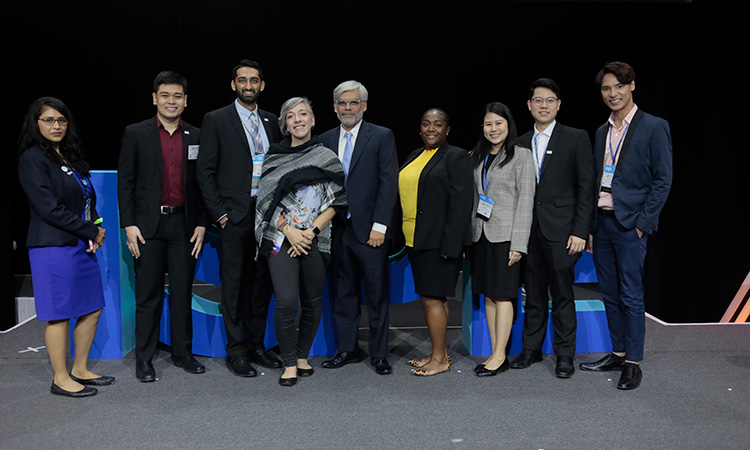
Global Hackathon - Team 4









